Toyota Highlander Vs Buick Enclave: Slightly Fancy Face-Off

The gap between mainstream and premium shrinks every year.
Take these two three-row SUVs. The Toyota Highlander and Buick Enclave can come loaded to the gunwales with all the leather, fancy tech, and creature comforts you would have expected of a luxury car a decade ago.
Get a Quote on a New Toyota Highlander or Buick EnclaveThe Highlander is the big seller, leading the three-row market with a strong combo of reliability and an available hybrid powertrain. The Buick was one of the first three-row luxury crossovers, pairing that traditional brand focus on comfort with more space than ever before. We spent a week with both to see which one deserves that spot at the local golf course.
Interior and Cargo Space
Highlander: The current Highlander debuted for 2020, and the interior design has stayed consistent. It’s a pleasant, functional space, the tiered dashboard design offering up lots of useful storage cubbies.The black leather choice also de-emphasizes the color contrasts in the design, something the pretty Glazed Caramel option doesn’t do. It also doesn’t feel as airy as the exterior dimensions might suggest, due to a tall dashboard and wide center console.
Despite that, the Highlander’s front seats offer up good space and comfort. Same with the second row captain’s chairs, which actually boast more legroom (41.0 inches / 1,041 millimeters compared to 40.4 / 1,026). The Highlander’s huge panoramic moonroof avoids the weird bump in the headliner that lower trims with the single-pane glass feature. The little plastic console between the seats is practical, but feels like a discount bin piece in an otherwise well-specced cabin.
The Highlander’s weak spot continues to be its third row. The seat cushions are low to the ground, forcing knees up. There’s just 27.7 inches (703 mm) of legroom too, so it’s uncomfortable for even teens on anything approaching a longer trip. You can fit three across the way-back, but it’s probably best to stick to two. At least the second row slides fore and aft to accommodate.
Trunk space is a healthy 16.0 cubic feet (453 liters) with all rows in their upright positions. That balloons to 48.4 cu-ft (1,370 L) with the third row folded flat, followed by 83.4 cubes (2,387 L) when the second row is down.
Enclave: Not to to conform to a stereotype here, but the Buick interior is what retirees would’ve thought luxury was like a decade ago. The asymmetrical dashboard design has an inoffensive, swoopy design compared to the Toyota’s angular look. The various gray tones give it a more inviting feel than the dour Highlander color scheme. The big, easy-to-use buttons are all concentrated towards the middle of the dashboard, making it a cinch to find whatever it is you’re looking for.
The Enclave has huge front thrones, with a flatter profile up top and below making it clear this SUV is meant for long-distance hauls. On paper, it forfeits around three inches of second-row legroom to the Highlander (38.3 in / 973 mm to 41.0 in / 1,041 mm), but in practice the space feels like a wash. Both are adult friendly, and the Enclave has noticeably more headroom. The flat floor between the seats makes it easier to head to the third row, too.
As expected given its almost 10 additional inches in length, the Enclave has much more third-row passenger space. There’s a half-foot more legroom, making it properly adult-friendly back there. The larger windows allow more light in, as well.
Likewise, the Enclave is comparatively cavernous. All-seats-up space is 23.6 cubic feet (668 L), and that expands to 57.7 (1,634 L) and 97.4 (2,758 L) when you drop the third and second rows, respectively. I’m pretty sure I heard an echo.
SEE ALSO: Hyundai Tucson Hybrid vs Toyota RAV4 Hybrid Comparison: Fuel-Sipping Family HaulersBottom Line: The Highlander has the nicer interior, but the Enclave offers up the most space you’ll find in a crossover. If you only sometimes need the third row, the Highlander should be plenty good for you. We’re calling this first category a tie.
Tech and Features
Highlander: Highlander buyers who opt for the fancy-pants Platinum trim will get a ginormous 12.3-inch touchscreen, sitting proud of the dashboard. We’ve given Entune a lot of flak in the past, and while it’s still far from our favorite user interface, this is one of the better examples. The sheer real estate allows the user to split the screen up, keeping lots of information available without needing to poke around sub-menus. You can have full control of the climate system, for example—but Toyota smartly keeps physical buttons just south of the screen. Wired Apple CarPlay and Android Auto both work as expected. Five USB ports pepper the cabin, all but one being USB-C.
This top-shelf model includes a few added goodies unavailable elsewhere in the range. The head-up display is always helpful, with a good range of adjustment to allow for varying driver heights. The digital rearview mirror is great when the back of the car is full of people and/or their things. It’s a little shocking that rain-sensing wipers and heated second-row seats are Platinum-only perks, however.
Toyota does a great job including a laundry list of standard safety equipment on every Highlander. Its Toyota Safety Sense 2.5+ suite counts automated emergency braking (with pedestrian detection), lane departure alert, lane trace assist, road sign recognition, auto high beams, and full-range dynamic cruise control amongst its ranks. The base-level Highlander L is the only model that doesn’t include blind spot monitoring with rear cross-traffic alert. Our main gripe is that the 360-degree camera uses a grainy, low-res feed.
Enclave: The Enclave features a comparatively tiny 8.0-inch touchscreen. This is the same one we’ve seen in various modern GM products, from the baby Encore GX on up. What it lacks in pixels, it makes up for in ease of use. The menus are quick to shuffle through, with a clear order. New this year is wireless Android Auto and Apple CarPlay. It’s simple to hook up, and connects quickly on startup.
While this is technically the “entry-level” Essence trim, Buick allows buyers to check a few key option boxes. That adds things like the nav-equipped infotainment, 10-speaker Bose audio system, and 120-volt outlet (all part of the Sound and Sites package), high-res 360-degree camera, rear camera mirror washer, adaptive cruise control, and upgraded automated emergency braking (tech package).
Speaking of the latter, the Buick matches the Toyota’s lineup of safety assists, save the road sign recognition. As standard, it includes blind-spot monitoring and rear cross-traffic alert as well. GM’s seat-vibration warning can catch you off at first, but there’s no arguing that it certainly gets your attention. It’s less intrusive to the rest of the cabin than the typical beeping, as well.
SEE ALSO: Kia Sorento vs Toyota Highlander Hybrid Comparison: Suburban SUV ShowdownBottom Line: The Highlander’s large screen and general ease of use goes a long way. The Buick makes do with a smaller touchscreen, but counters with better cameras, more natural driver assists, and wireless phone mirroring.
Powertrain, Driving Feel, and Fuel Economy
Highlander: Highlander buyers have two underhood choices when speccing their crossover. The standard equipment is Toyota’s venerable 3.5-liter V6 engine. This six-pot churns out 295 horsepower at a high 6,600 rpm, and a peak of 263 lb-ft at 4,700 rpm. An eight-speed automatic handles shifting duties, in either FWD or AWD formats.
This being Toyota, there’s also a hybrid option. This ditches the V6 for a 2.5-liter inline-four and no less than three electric motors. Combined outputs are 243 hp and 175 lb-ft of torque—the latter figure doesn’t accurately portray the instant-access torque from those motors, however. Like the gas-only model, the hybrid is available in FWD or AWD.
The V6 is a fine motivator and nothing more. It hauls the Highlander up to speed without issue, though the eight-speed can sometimes take a while to downshift to the right gear. Importantly, it’s predictable, which is key in this segment.
Like practically every other modern Toyota that isn’t a truck, the Highlander rides on the brand’s TNGA platform. That gives it a calm, collected demeanor in both city and highway driving. It doesn’t make a meal out of surface imperfections, even on those big 20-inch wheels. You’ll hear bigger bumps more than you’ll feel them, particularly from the rear.
SEE ALSO: 2021 Buick Envision Review: For Your ConsiderationFuel economy in the Highlander V6 is pretty average for the class. Official figures from the EPA peg it at 20 mpg city and 27 mpg highway, for a combined 23 mpg rating. (Canadian figures are 11.8, 8.6, and 10.3 L/100 km, respectively.) In a week of mixed driving, we saw it hover right between its city and combined ratings.
Enclave: “Those who lament the death of the traditional American sedan,” says Mike, “and long for a return to the days of the Ford Crown Victoria, Chevrolet Caprice and Buick LeSabre; fear not. It still exists, it’s just a large crossover from Buick.”
He’s not lying. The Enclave is one of the smoothest, stress-free drives we’ve had in the AutoGuide garage in years. The suspension swallows up bumps big and small, rarely letting any disruption make its way to the cabin. The steering is light, consistent, and free of vibrations. Same goes with the brake pedal. Crucially, the Buick never falls into laziness; it just feels confident in removing as much stress from your drive as possible. In turn, despite the 10 additional inches in length, it’s as easy to place on the road as the Highlander.
Buick keeps things simpler for Enclave buyers, offering a single V6 engine with a choice of front- or all-wheel drive, both with a smooth nine-speed automatic. The 3.6-liter boasts more power than the Toyota’s 3.5-liter, its 310 hp coming in even higher (6,800 rpm). There’s slightly more torque, too—266 lb-ft—but it peaks at a low 2,800 rpm. That helps the Buick feel quicker in day-to-day driving.
You pay for that advantage at the pumps, though not as much as the numbers suggest. Officially, the Buick scores just 17 mpg city, with a 25 mpg highway rating boosting its combined figure to an even 20 mpg. (Canadian figures: 13.6, 9.6, 11.8 L/100 km, respectively.) During our week with it, the Enclave beat its combined figure.
Bottom Line: The Buick’s cosseting ride edges it ahead here. It makes no effort to be sporty, and is all the better for it. That it’s just as easy to drive as the smaller Highlander seals the deal.
Styling
Highlander: The Highlander is unmistakably a modern Toyota. The wide front grille gives it the RAV4/4Runner connection, with an extra helping of soft brushed chrome trim on the Platinum. Swept-back headlights lead to surprisingly dramatic profile, with a deep character line starting from the lower front wheelarch before climbing up and over the rear wheels. Ruby Red Pearl costs extra, but we’d say it’s worth it—less monochrome is always good. The Platinum also boasts a unique 20-inch alloy wheel design.
Enclave: Buick gave the Enclave a facelift this year. How effective it is depends on which end you’re looking at. To our eyes, the front looks mean yet very attractive, combining thin headlights with a big grille and large lower foglights in a way that’s proven tough to nail down. The 20-inch, two-tone wheel design is also very cool. The look starts to falter walking around the Enclave, as its bulbous shape feels at odds with that sharp front-end. The rear design puts a strong emphasis on the width of this big rig, but the downward curve of the chrome strip connecting the taillights ends up making it all look a little droopy.
Bottom Line: Both Mike and I prefer the exterior design of the Enclave. It’s a funky, futuristic look that gives it serious presence, even if the squinty headlight trend is approaching critical mass.
SEE ALSO: Jeep Grand Cherokee L vs Acura MDX ComparisonPricing and Value
Highlander: In America, the Highlander lineup begins with the $37,070 Highlander L FWD. Adding AWD bumps that price up by $1,800, a figure that can shrink to $1,600 or rise to $1,950 depending on trim. The Highlander LE ($39,270) is where the lineup begins in Canada ($46,640 CAD, with standard AWD), and where buyers gain access to the hybrid drivetrain, for a $1,500 ($2,000 CAD) surcharge. The mid-range XSE ($43,865 / $51,840 CAD) is unique in that it’s gas-only.
Our tester is high-spec Platinum AWD V6. There are no options outside of paint color ($425 / $295 CAD), so the final tally is $51,600 ($59,635 CAD).
Enclave: The Enclave starts far richer than the Highlander, at $46,095 ($51,898 CAD). However, this model includes the afore-mentioned option packs, which boosts its sticker to a comparative $52,485 ($58,413 CAD). AWD is available as a $2,000 option—it’s standard in Canada.
That higher starting price means the Enclave can get proper fancy if you’re feeling spendy. The Avenir AWD with the Technology Package is a steep $59,840 ($64,843 CAD), but it’s a much nicer space to spend time, and includes Buick’s excellent continuous damping suspension.
SEE ALSO: Kia Sorento vs Honda Pilot Comparison: Three-Row ThrowdownBottom Line: As equipped, these two road leviathans are remarkably close on price. The Toyota feels more expensive from the driver’s seat, but only barely. It has a slight advantage in the US, whereas the Buick is the comparative value option in Canada. We can’t ignore all the extra space it offers, either.
Verdict: Toyota Highlander vs Buick Enclave Comparison
The Highlander is the segment leader for a reason. It does many things well, and comes in many flavors, covering the range from affordable to affluent. In the age of ever-increasing gas prices, the still-rare availability of a hybrid model gives it a leg up on the competition.
That’s why it doesn’t win this face-off, though. The Highlander’s V6 drivetrain can’t match the old-school smoothness of the one in the Enclave. The Buick has far more space too, and isn’t that one of the main reasons for buying something this size? As Mike said, “large SUVs are for passengers, which the Enclave took to heart.” That rider-first ethos inches the Buick’s sharply styled nose ahead here.
Become an AutoGuide insider. Get the latest from the automotive world first by subscribing to our newsletter here.

Kyle began his automotive obsession before he even started school, courtesy of a remote control Porsche and various LEGO sets. He later studied advertising and graphic design at Humber College, which led him to writing about cars (both real and digital). He is now a proud member of the Automobile Journalists Association of Canada (AJAC), where he was the Journalist of the Year runner-up for 2021.
More by Kyle Patrick



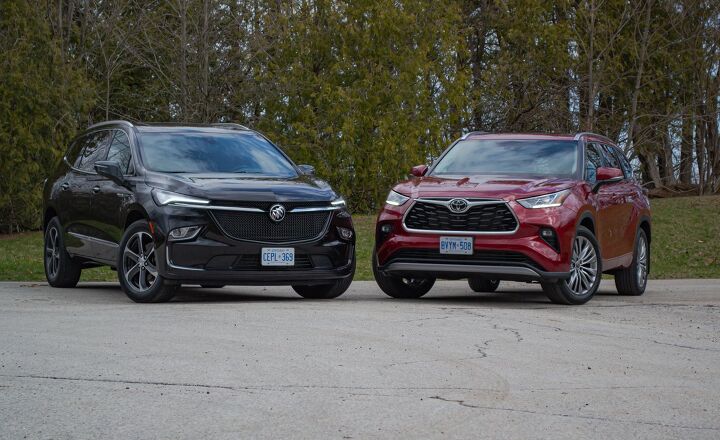
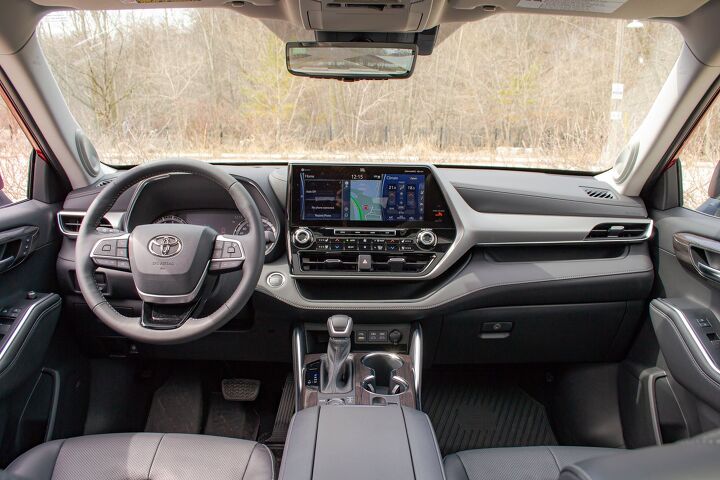





































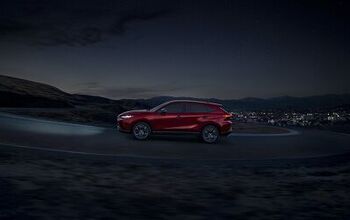
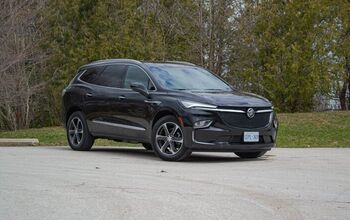




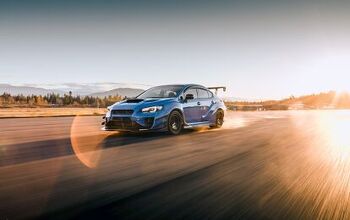
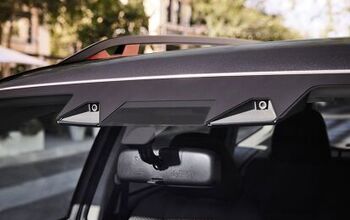
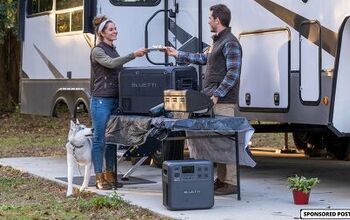
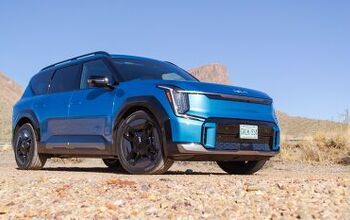



Comments
Join the conversation
Now put resale value into the equation.
Thank you for giving justice to Buick Enclave. Im a very happy and proud owner of this American car. Happy and content with overall performance, technology, and the looks. Im most proud of the fact that most, if not all of the Buick Enclave owners/drivers are well-behaved on the road. Respectful of traffic and road signs, and of their fellow drivers in the road. When you see this car on the road, you could also expect that a decent driver is behind the wheel. ???